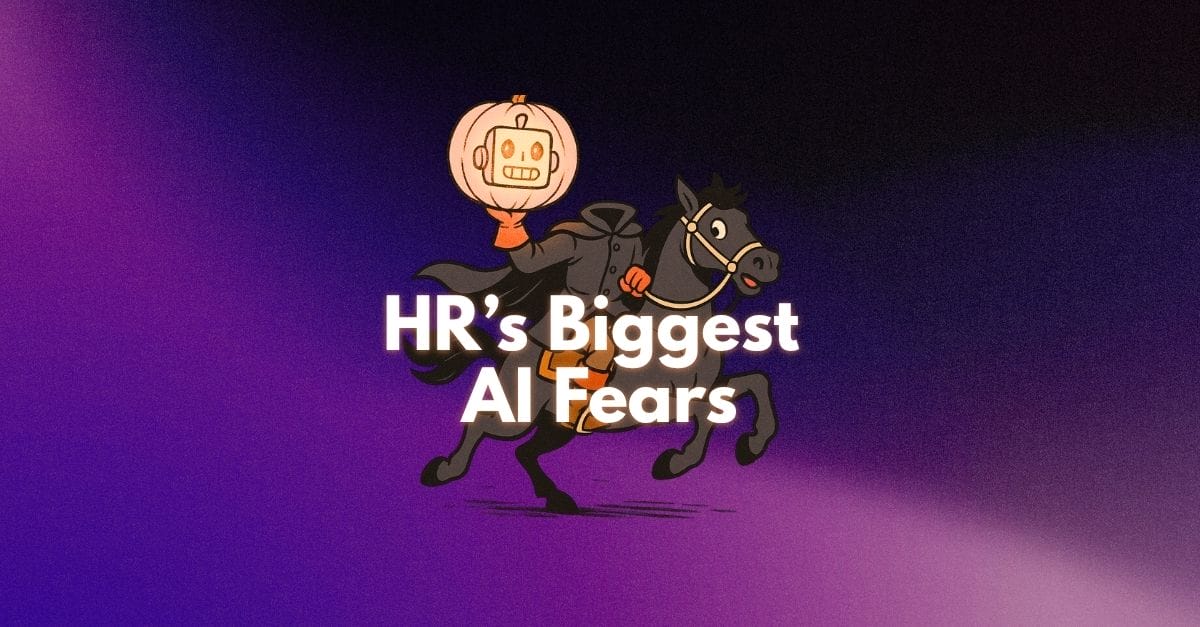Hebba is the Chief People Officer at Workweek and founder and creator of “I Hate it Here.” A version of this post ran in her weekly newsletter, which has over 115,000 subscribers and focuses on how HR/People teams can build great work cultures.
————————————————————————————————————————————————————————————————————————————-
Do you have that one coworker who just… confuses you?
Like every interaction feels a little off, and you catch yourself thinking, why is this so hard or why are they doing that???
Been there far too many times. I once had this coworker who would take forever to make a decision and slow down every process by at least one week. It infuriated me.
TBH a lot of work friction doesn’t usually come from the work itself.
It usually stems from how we work together.
Like:
❌ They’re moving too fast, you’re moving carefully and trying to be strategic, and now you’re both frustrated.
❌ The deadlines weren’t the issue, it was the lack of clarity on who was doing what and when.
❌ You want to whiteboard and ideate. They want a spreadsheet, and desire clarity in rows and columns.
❌ You’re focused on the “how,” they’re obsessed with the “why,” and now things are stalled.
TBH: It’s not always easy to get to know each other at work!
Oftentimes we’re thrown in the work and don’t really get a chance to slow down and do the foundational work of relationship building. Working relationships are a constant work in progress and they take things like time, context, and trust to build.
And the hard part is that when relationships aren’t strong, you feel it everywhere! It’s very easy to feel the tension when styles clash.
Those tensions can lead to things like disengagement, burnout, or even people choosing to leave.
If you’re looking to avoid another “it’s not you, it’s me” type of convo, this deep dive is for you!!!!
I partnered with The Predictive Index to talk about how their Behavioral Assessment helped me better understand myself, my exec team, and my own direct report – and how that’s changed the way we all work together.
Here’s what I learned, and my relationships are improving day over day.
Holding up the mirror
Hi, sorry to make this about me but it will be for a second!!
You’re about to learn more about me than you probably want to know…
I’m a Pisces Sun, Leo Moon and Aries Rising. JK JK.
In all seriousness, while astrology is super interesting to me there’s a better, more data-driven way to measure behavior…
PI’s Behavioral Assessment.
According to that assessment, I’m a Persuader.
Decoding that:
✅High extraversion (let’s be friends??)
✅High drive (strong sense of urgency in this one)
✅Impatient for results (LOL, life long struggle)
I love to move fast, have a bias toward action and am always thinking about how to bring along the people. Catch me in meetings saying, “what if we just…” and then suddenly a whole new project is born.
Yes, that’s me. Annoying and helpful.
TBH: the assessment didn’t tell me anything radically new, but it named what I already knew, and helped me make sense of some of my working relationships.
Because even the most self-aware and relationship-driven HR leaders need a little help in decoding others…
I had a few lightbulb moments where I was like “oh I do that!” And there’s so much power in that. It gave structure to the instincts I’ve always had.
But one of the biggest draws of the assessment? It helped me be super aware of the ripple effects of my instincts.
Like:
➡️ My bias toward action? It energizes teams but it can also steamroll people who need time to process.
➡️ My love of influencing others? Great for building alignment but can read as pushy if I don’t pause to ask questions. I’ve been told I can be “overwhelming” at times…
➡️ My fast pace? It’s part of my leadership style but sometimes speed needs to make room for details and precision.
The very traits that make me super effective can also be the ones that create tension if I’m not careful…
Every leader and manager could stand to be a bit more aware of the ripple effects of their instincts. Because in a team full of different working styles, that kind of self-awareness isn’t just helpful, it’s non-negotiable.
But understanding myself is only step one… let’s look at how this assessment helped with my exec team, my manager and my direct report.
My exec team
Leadership teams can make or break an organization.
It’s not just about vision of an org!!! It’s about how your leadership team collaborates, communicates, and handles conflict when things get messy.
Employees look to the top for direction and if the top isn’t aligned, you better believe the rest of the org doesn’t stand a chance.
There’s a science behind team discovery. So, what did this assessment teach me about my exec team?
Our team features: A Maverick, two Persuaders, one Venturer, and a Strategist.
I feel like I’m about to tell a bad joke. A Maverick and a Persuader walk into the bar…
Moving on.
When looking at our exec team on the team map within PI’s software, one quadrant clearly lights up: Innovation & Agility.
Decoding what that means: We’re all wired to move fast, think big, and challenge the status quo. We get energized by new ideas. We do well existing in ambiguity (almost crucial for a startup). We love a whiteboard moment. Catch us in our weekly meeting creating time and space to just whiteboard structures, flows, even approvals out.
But when everyone leans toward vision and risk-taking, things like process, precision, and sustainable follow-through can get… deprioritized.
TBH: It means execution can be a struggle.
We’re not naturally wired for structure or detail. Meetings are electric, but sometimes messy. Follow-through doesn’t happen automatically. When we added someone new to our team we took a moment to realize there was a better way of potentially working, and we started designing around our collective style.
For example: Our weekly meeting now follows a level 10 framework.
Level 10 meeting comes from the Entrepreneurial Operating System (EOS). It was created by Gino Wickman in the book Traction. Basically, it’s a structured weekly meeting format for leadership teams that is designed to keep everyone aligned, accountable, and focused on the most important issues.
BTW: PI has a tool that helps you with meeting management as well.
That meeting structure and PI Perform’s built-in documentation have helped us immensely with the follow-through, promoting transparency and accountability. PI also helps promote team balance, by allowing us to visualize the group’s strongest drives, as well as its potential gaps.
Instead of trying to “fix” our style, we’re focused on building the right systems to support it. The assessment can help your team stop guessing what’s going on and start getting intentional about how they operate.
Now, onto my manager… This is tea so get ready!
My manager
Work relationships are always a little layered, but none more so than the one you have with your manager.
They influence your priorities, your stress levels, and your growth trajectory.
And if you’re in HR? That relationship can shape your ability to do your job at all.
Especially when you report to the CEO…
My boss is a Maverick: bold, independent, handles ambiguity well, always ready to break what isn’t working and rebuild something better.
I’m a Persuader: fast-paced, people-driven, high energy, and always rallying others toward a shared vision.
On our best days, it feels like creative ping-pong. We lob ideas at each other and go back and forth, building momentum as we go. We’re into taking risks, dreaming big and most of all MOVING QUICK. (Sometimes too quick, but we’ve learned.)
I think we probably stress people out when we’re both in the zone, because Slack messages will fly back and forth faster than anyone can take a breath! We both also love conflict and challenging ideas.
But when we’re not aligned… oof, I REALLY feel it.
TBH: PI’s assessment gave me language for things I had felt, but couldn’t quite articulate. And once I dug into our results, a lot of lightbulbs went off for me.
Two big moments of realization for me:
💡Mavericks challenge the status quo by nature. They’re driven by independence and big-picture thinking, which helped me realize that when he pushes back or redirects, it’s not personal, it’s about pursuing a better path.
💡Mavericks lead with autonomy, innovation not affirmation. But I crave appreciation, this job is thankless! I just want to hear a “good job” every now and then!! For a while, I thought his silence meant that I was doing something wrong. Like I wasn’t doing a good job or that I needed to do even more. It clicked for me when I dug into his assessment results and saw that Mavericks are so self motivated that they don’t need the pats on the back to keep going. It used to feel like a mismatch, like I was too needy (ugh), or he was too distant.
But PI helped me realize it’s not about more appreciation, it’s about the right kind. He does value me, he just shows it in ways I wasn’t trained to recognize. He trusts me with big projects, he lets me run with ideas, and he backs my decisions without hesitation. That is his appreciation, it just doesn’t come with a gold star or a Slack emoji despite me asking a few times for it.
Wow, that just felt like relationship therapy. But reading his report compared to mine really felt like that. It’s why I’m so passionate about this deep dive because PI helped me uncover and understand so much about the most important relationships at work.
Like with my exec team, my manager and even my direct report.
My direct report
I AM SURROUNDED BY MAVERICKS!!!!!
My direct report is also one… But the most fascinating thing that popped up in her report VS my CEO’s report was the differences in their patterns.
The assessment results report plots you across these four factors: Dominance, Extraversion, Patience, Formality.
Decoding that:
- My CEO has a large gap between behavioral drives, meaning he is essentially an unwavering Maverick through and through. Think: fast moving, strong expression, bold and likely to push boundaries. He very strongly expresses his natural drivers.
- My direct report’s pattern is still Maverick, but much closer to the norm/middle. Think: balanced, less extreme, and more adaptable based on the environment. While still a Maverick, she is more subtle and flexible when it comes to what makes that Profile operate..
So while they both may be Mavericks there’s clearly still a difference in how to work with each of them!
TBH: I think I might be the perfect manager for a Maverick?
Why?
Because my manager style is hands off until I need to be hands on. I try to inspire my team to think creatively by letting them come up with solutions rather than me telling them and TBH I’m more of a vision person than a process person.
And it works because Mavericks are independent, don’t need a lot of external validation in their work and thrive with freedom rather than handholding.
Our biggest struggle? I like to yap. I want to TALK THINGS OUT and sometimes she doesn’t want that. I’ve learned to read the room!
When we read each other’s reports, we both reported back with no surprises. We’re an incredibly lucky duo that found our rhythm with one another relatively fast.
I still continue to ask, what do you need from me? I think she appreciates the autonomy but also knows she can ask for more.
The organizational impact
Using the Behavioral Assessment at an organizational level does more than help people “understand themselves.”
It builds a shared language for how teams collaborate, make decisions, and handle conflict, which directly impacts how fast (and how well) work gets done.
When teams understand each other’s natural styles, it removes a ton of the friction that slows projects down: miscommunication, mismatched expectations, and unspoken assumptions.
Imagine a workplace where people aren’t tiptoeing around each other because they actually understand each other. Where feedback doesn’t feel like a threat, collaboration doesn’t feel impossible, and working styles aren’t a mystery to decode.
THE DREAM!!!
Incorporating PI’s Behavioral Assessment can be the tool that helps take that dream and turn it into a reality.
And it doesn’t just help your employees understand each other…
It’s a strategy for better hiring, smarter org design, stronger leadership, and less drama.
Curious what your behavioral pattern is? Take the assessment to find out!
Bonus: If you want to get the 411 on your team, book time to chat with the PI team—I guarantee you’ll learn something new.








